February 11, 2022
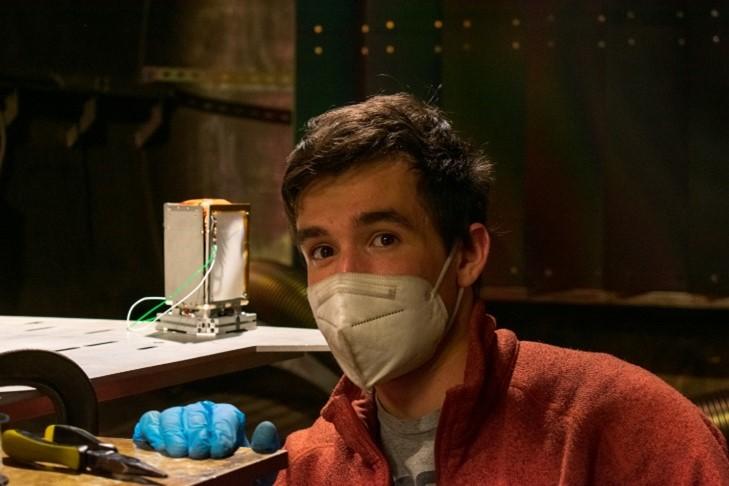
Dylan Kemelor
"Development of Inflatable LEO System for LIDAR Targeting and De-Orbit Applications"
This presentation details the research and development that went into creating an inflatable mylar balloon for the TARGIT mission in SSDL. The balloon was intended to pack into a very small volume and maintain satisfactory optical characteristics when scanned with a LIDAR topographic sensor. The system includes a ‘center body’ where a gas plenum, inflation valves, a battery, and communication electronics are stored. We decided to use mylar as the material of choice and impulse sealing to ensure strong and reliable seams. The inflatable and center body system were validated in the SSDL Lab, in a scale bell jar, and in the HPEPL vacuum chambers. The inflatable system was manufactured for flight and loaded onto the TARGIT 3U CubeSat, which was deployed from the ISS (International Space Station) on January 26th, 2022.

Oluwafikayo Oshinowo
"Flame Edge Detection in a Vitiated Crossflow"
Edge detection algorithms are an image processing tool that can help quantify the size, shape, or location of an object. In the case of a jet in vitiated crossflow, an edge detection algorithm can help determine the flame shape as well as the holding or attachment of the flame. However, some of the images of the flame can be particularly noisy, leading some edge detection algorithms to find false edges or remove edges altogether. Utilizing a fuzzy logic edge detection algorithm helps mitigate the problems that other algorithms tend to face which allows there to be more usable data from a single test campaign.
February 18, 2022

James Anderson
Telemetry Decryption and Visualization for GT Mission Operations Center for GT-1 CubeSat
The GT-1 CubeSat is the first satellite supported by the GT Mission Operations Center (MOC). Recently deployed from the ISS, the CubeSat features a UHF radio antenna to broadcast beacon packets that feature satellite health and analytics. These beacons are sent as telemetry and received by the MOC to better understand the effects of battery life, atmospheric drag, and other characteristics of orbiting objects to aid in the design of future CubeSat missions. However, the beacon packets sent by GT-1 are encrypted and require the usage of a dictionary to reference the meanings behind certain bytes in certain positions. Additionally, the data must be visually presented in an intuitive manner such that future Georgia Tech satellite designers understand the conditions of Low Earth Orbit. For this reason, MatLab and Python scripts were developed to automatically facilitate the decoding of GT-1’s telemetry, which are then uploaded to an online database for archiving. By developing this framework, packets sent by GT-1 and other future satellites can be displayed and interpreted as easy-to-understand visuals to better in the development and operation of future CubeSat missions.
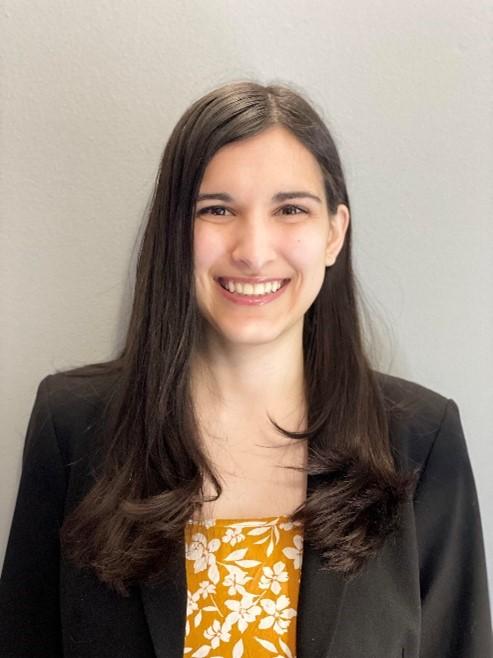
Emma Johnson
Data Packaging and Designing of the STRATOS Payload
The STRATOS mission was an endeavor by local company Spaceworks to create a payload recovery vehicle to ensure safe and easier transport of payloads from the ISS to Earth. Spaceworks contracted Dr. Lightsey’s lab to create a payload to go inside of this vehicle to prove their concept. The STRATOS payload that was created focused on data storage and live communication between the payload and the ground station. This presentation will discuss the transmission of the full amount of data from the instrumentation via radio to the ground station using the Arduino teensy platform, packaging of data and sensor output format and how that effected mission functionality.
February 25, 2022

Carnell Lyon
Numerical Optimization for Air Vehicle Parameter Identification
Projectile parameter estimation is a difficult optimization problem due to the extremely nonlinear behavior of a projectile’s flight dynamics. An optimization method that uses meta-optimization for estimating projectile parameters has recently been developed. Meta-optimization is theoretically more efficient than a regular optimization technique like gradient descent in that the meta-optimizer intelligently selects the best optimizer from a bank of optimizers for minimizing a given cost function at a particular moment. To validate the method, a meta-optimizer was written in Julia which is a programming language designed for high-speed computation. In this presentation, the meta-optimizer design process and theoretical solutions to its design problems will be discussed.

Jerry Schweiger
Non-Volatile Particulate Emissions from a High-Pressure Combustor Rig
High-pressure, high-temperature combustion processes are common in many aerospace applications, particularly in the burners of jet engines and aircraft auxiliary power units. Elevated temperatures and pressures have the potential to increase combustion efficiency up to a certain limit, and as such it is of great interest to engineers to be able to manipulate these variables. One way in which this is done is by modifying fuel equivalence ratio, burning a fuel rich mixture to change output temperature. This comes at a price, however, and suffers the tradeoff of also increasing the amount of particulate matter output from the combustion process. Non-volatile particulate emissions (soot) and nitrous oxides in particular must be carefully studied in order to regulate their output, so as to minimize harmful environmental or health impacts. This presentation explores the setup and modeling of an experimental facility meant to study these non-volatile outputs in a high-pressure, high-temperature combustion rig burning a fuel rich mixture. System requirements and the subsequent design of a Unistrut stand and fuel pipeline and manifold for the rig’s fuel piston accumulator are discussed extensively.
March 4, 2022

Tim Chow
"Development of Soft Tensegrity Systems for Space Structures and Planetary Exploration"
Tensegrity, short for the term tensional integrity, describes a system comprised of isolated components under compression held together within a tensile network. These tensile forces help keep the structure stable, even to the point when the compression elements experience buckling. Because of their lighter weight and ability to withstand high velocity impacts, tensegrity systems can potentially be adopted for structures in space and those used for planetary exploration. New revolutionary designs involving tensegrity allow for more efficient and cost-effective systems for potential use in planetary missions. This presentation will focus on the efforts involved in the design and development of a system which enables a tensegrity lattice to move robotically, along with efforts to upscale a lattice for large-scale operations.

Madhukarthik Mohanalingam
"Study of a Future Mission to Alpha Centauri"
Alpha Centauri is the closest star system to Earth that could host habitable exoplanets, so a mission to explore it has significant scientific value and will profoundly change the world. Current spaceflight technologies are not sufficient to enable this mission in a reasonable timeframe. Recent mission proposals discuss the potential utilization of lasers to blast nanocraft with light sails up to 0.2 times the speed of light. Such technologies, if successful, will massively shorten the travel time by a factor of two hundred times or even more, compared to existing methods. Although a flyby mission would be easiest, potential methods of slowing down the interstellar spacecraft have also been proposed to allow better study. The development of such a mission would provide several near-term benefits, including fast, efficient access to our solar system and improved, innovative technologies. Pushing the boundaries of engineering and science, we can witness the birth and results of such interstellar missions within our lifetime. This presentation will discuss the purpose of this mission, the technologies and trajectories capable of potentially enabling the mission, the near-term benefits, and ultimate impact.
March 11, 2022

Graham Jordan
"Design & Creation of Dynamic Telemetry Displays for the Georgia Tech Mission Operations Center"
The Georgia Tech Mission Operations Center (GT MOC) is a project spearheaded by the Space Systems Design Lab (SSDL) to streamline the ability to communicate with and command Georgia Tech satellites. An integral part in the development of the MOC has been building infrastructure for processing and displaying important telemetry received by the on-campus ground stations. This presentation will elaborate on the process of developing these display systems, focusing on the initial interfaces that used software such as Matlab and STK as well as current progress on transitioning these to more open-source solutions.
March 18, 2022

Manas Mantha
"Experimental Studies of Simulant Decomposition in Vitiated Hot Crossflow"
Chemical warfare (CW) agents and toxins have widely become a topic of increased interest as the future fate of chemical warfare weapons is founded on the intensified threat terrorist attacks. Highly toxic CW agents such as sarin are especially important to study to better understand their properties and incineration under hot temperatures. This experimental research aims to utilize organophosphorus simulants, in this case diisopropyl methyl phosphonate (DIMP), which have similar chemical structures and combustion rates as their CW counterparts. This will be done through the reconstruction of a high temperature mixing tunnel with a vitiator at the test section along with an injection system that will be tested with air, argon, and CO2 gas before DIMP is utilized. Access to the test section to measure the flow will be through a cooled window that will enable LDV/PIV diagnostics of the flow field. The window must be cooled as the experiment will be running at high temperatures with preheated air in order to properly incinerate the simulant compounds. There are major gaps in our knowledge regarding high temperature decomposition of CW agents and simulants which experiments as such will help to design better strategies to counter weapons of mass destruction.
Alex Mealey
Tracking and Identification of Resident Space Objects
Tracking and identification of resident space objects (RSOs) is important for understanding the data and science being transmitted by artificial satellites. The second Orbital Calibration mission (OrCa 2) is a CubeSat with a main objective to improve Georgia Tech’s ground tracking models and instruments through use of bright panels and reflectors. A secondary goal for OrCa 2 is to test a new position fix mechanism by which the CubeSat will use the Global Positioning System (GPS) to obtain its own location in space. Previous Georgia Tech CubeSats have relied on commercially bought devices to determine the position of the spacecraft, however these devices are expensive and difficult to work with. The newly designed position fix mechanism is low cost, and highly replicable, meaning it could potentially be used on future Georgia Tech CubeSat missions. The new position fix mechanism relies on common electronic components, including a HackRF One Radio and a Beagle Bones Black computer, to obtain a GPS location fix that will be transmitted to Earth ground stations. This presentation will discuss the assembly of the parts for the position fix mechanism, configuring both hardware and software for CubeSat specific applications, and testing the mechanism.
April 1, 2022

Adhiraj Bhagat
"Laser Diagnostic Methods for Turbulent Premixed Combustion in a Swirl Stabilized Combustor"
Turbulent premixed combustion is widely used in engines for aerospace and automobile applications and stationary gas turbines. Although the effects of turbulence on premixed flames have been studied before, the effects of combustion on turbulence characteristics have received considerably less attention, especially at highly turbulent flow conditions characteristic in practical devices. Most studies have used direct numerical simulations to observe these effects which are computationally expensive, are limited to low Reynolds number flows, and commonly do not consider the effects of realistic flows like geometry. Experimental measurements of turbulence characteristics are commonly acquired using laser-based diagnostic methods. This presentation will discuss the diagnostic methods – tomographic particle image velocimetry and planar laser induced fluorescence – and their experimental setup; these are used to measure the high-resolution 3D velocity field and the planar distribution of formaldehyde in the flame of a swirl-stabilized combustor.

Melam Master
"Prediction of Forces and Moments of Canonical Shapes"
When it comes to aerodynamic analysis of agile unmanned aerial vehicles (UAVs), there is an obvious lack of research of fuselage aerodynamics. Current practices involve assuming the vehicle is a point-mass object and frontal equivalent flat plate drag equation, both of which are inaccurate. In the present work, an alternate solution is being developed. The Complex Aerodynamic Shape Simulator (COMPASS) can accurately perform aerodynamic analysis of the fuselage of agile UAVs up to five orders of magnitude less computationally costly than computational fluid dynamics (CFD). This simulator deconstructs the complex shape into canonical shapes: prisms, cylinders, spheres, etc. in order to obtain the quasi-steady aerodynamic coefficients of the fuselage. In the present work, two new shapes are being added to the simulation process: the spheroid and the flat plate. While the current simulation of these shapes is inaccurate due to the lack of sufficient data, future data collection will help provide a more accurate empirical formulation for the calculation of the aerodynamic coefficients

Brendan Mindiak
"Modeling Thermoacoustic Instabilities in Combustor Rigs"
In modern engine design, one problem that plagues many promising designs is a tendency for the internal system pressure to rapidly inflate such that the combustor system is damaged or even destroyed. This outcome is the product of competing pressure waves, or thermoacoustic instabilities. These instabilities can be difficult to predict but detrimental to the success of a combustor rig. Therefore, this project aims to improve upon the current modeling technique to be better able to predict the amplitude of these instabilities, thus providing insight into the success of a rig without relying on full-scale testing. A pre-existing data set for a can-annular rig, provided by Jeong-Won Kim, relied on pressure transducers located azimuthally throughout the rig to be able to visualize the pressure amplitude as a function of time. Using this data set, complex reduction methods were applied that would allow a 3-D wave equation based only on measurable testing conditions to be fit to the pre-existing data. This model was found to be successful in modeling the pre-existing data set, but additional data collection is recommended to further verify the produced results to predict the pressure amplitudes in these rigs
April 8. 2022
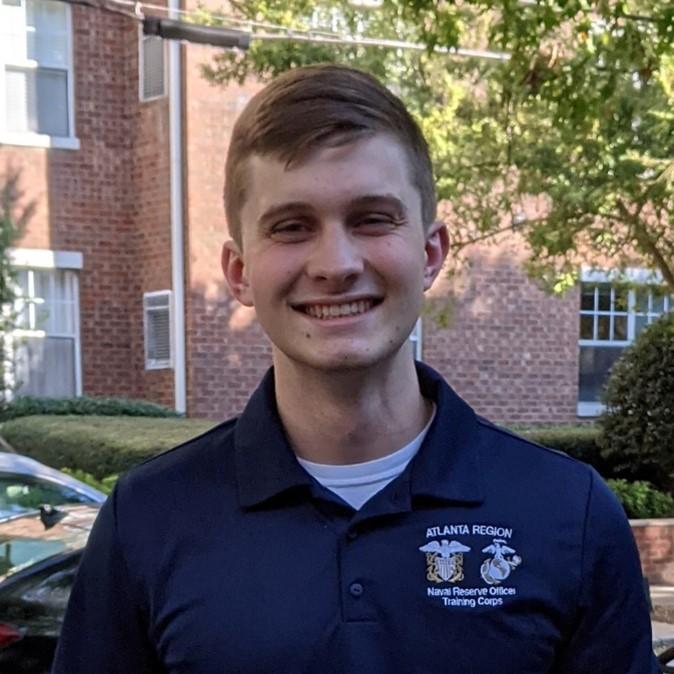
Timothy Bowes
"An Analysis of the Engineering Challenges Presented by Inflatable Systems for Space Applications"
Deployable structures for space applications are frequently desirable solutions to mission requirements but often come with significant engineering challenges. The TARGIT CubeSat mission needed a large structure with a known shape and reflectivity to validate its onboard LIDAR system. An inflatable structure attached to the spacecraft by an extendable tether is a good solution to this requirement. It is relatively lightweight and utilizes minimal volume while stowed to produce a large structure with a known shape and reflectivity after inflation. However, creating a thin, stowable, and pressurizable system to be used in a vacuum presents many complexities. This presentation will discuss the design, manufacturing, and regulatory challenges that were overcome to develop the inflatable system for TARGIT and the significance of these findings for future space applications.

Madeline Burkey
"Computational Modeling of Airfoil Performance Under Rain Conditions"
Abstract: It is known that rainfall, and the formation of water on airfoil surfaces can dramatically impact the lift production of airfoils, as well as greatly increase the drag. While large scale airfoils, typically found on aircraft, are not significantly affected by the surface water layers that are only a few millimeters thick, rainfall can profoundly affect the performance of small chord length airfoils found on vehicles such as small-scale drones and eVTOL machines. This semester’s work has consisted of computational studies performed on the effects of rainwater on the lift and drag characteristics of such small-scale airfoils. A parametric study was conducted to quantify the loss in lift and rise in drag as a function of airfoil shape, angle of attack, Reynolds number, droplet diameter, and the rainfall rate. Comparisons with available test data were made.

Jonathan Kagoo
"Mechanical Design of Unmanned Aerial Vehicles Systems"
The Intelerligent Robotics and Emergent Autonomy Lab at Georgia Tech conducts research in vehicle design, dynamic analysis, and control systems – aiming to improve actively-controlled robotic systems. This presentation will outline multiple systems improved on the iREAL lab through a variety of projects that were completed over the past two years. It will begin with an in-depth overview of how the system was envisioned and designed, with emphasis on the design for manufacturing. Then, the project construction and timeline will be introduced alongside analysis on manufacturing updates made throughout the process. The presentation will be rounded out by discussing future concerns and solutions, as well as lessoned learned. Overall, this presentation will discuss system improvements to UAV systems with the optimal design methods and decisions.
April 15, 2022

Luke Marino
“Development of a Multiphase Propellant Feed System for Hall Effect Thruster Testing”
Electric propulsion (EP) uses electrical power to accelerate propellant via electromagnetic fields, typically providing higher specific impulse than conventional chemical propulsion but very low thrust. If EP devices could be proven to operate effectively on chemical propellants, a satellite could integrate both chemical and electric propulsive capabilities into a single design, affording it the best of both worlds. This is especially useful as the number of satellites on orbit increases in the coming decade, increasing the need for satellite maneuverability to avoid collisions. This project details the development of a multiphase propellant feed system (MPFS) that will be used to test EP devices on a variety of propellants, including a chemical monopropellant that is a mixture of hydrocarbons and water vapor.
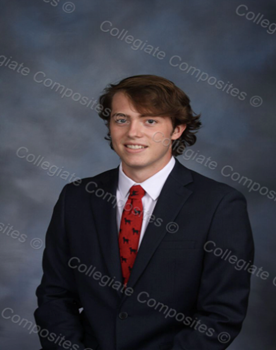
Brenden Oates
"Modeling and Testing of Rotating Helicopter Slung Loads in a Low Turbulence Wind Tunnel"
A better understanding of the dynamic instabilities of rotating bluff bodies in flow can lead to insight in a variety of aerospace applications. One of these applications being helicopter slung loads in unsteady aerodynamic conditions. This paper focuses on two bluff body shapes, a finite cylinder, representative of engine canisters, oil drums, or other similarly shaped cylindrical payloads, and a rectangular prism, representative of a conex box shipping container. While there is literature that investigates the aerodynamic characteristics of helicopter slung loads, few studies have been done on short, rotating bluff bodies with two unconstrained ends. A six degrees of freedom (DOF) ATI load cell was used to measure the forces and moments acting on the cylinder in flow. A Teensy micro-controller, which collects a terminal log of the stepper motor commands as well as the number of steps commanded, was used to determine the position and angular speed of the cylinder. The bluff bodies were tested in a quasi-steady state to represent static positions and in varying rotational speeds.
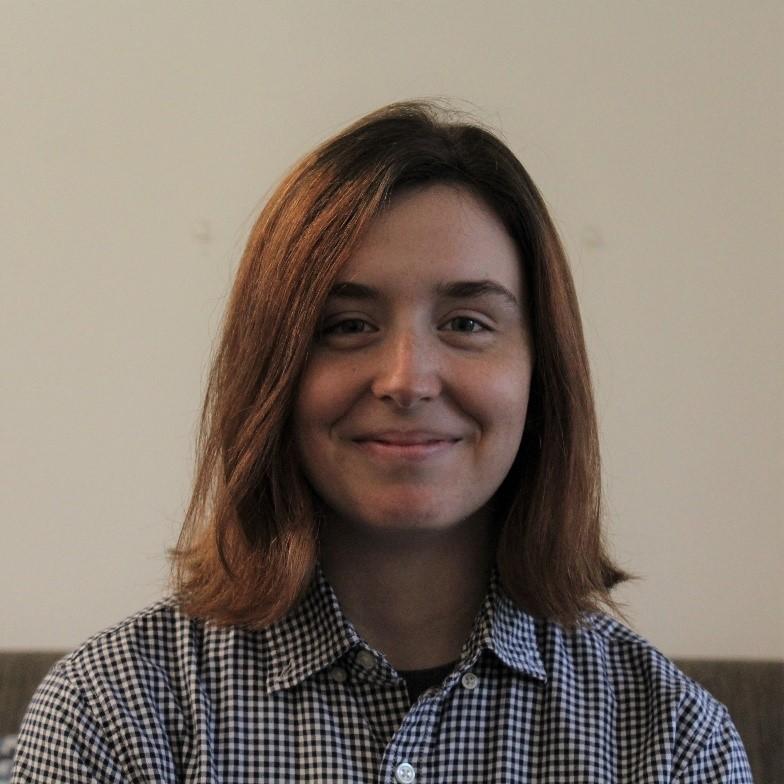
Ava Thrasher
"GT-X: Rapid Cube-Sat Design, Testing, and Integration"
The GT-X research project hosted by Space Systems Design Laboratory (SSDL) is an opportunity for undergraduate students to collaborate on and develop an annual crib to grave 1U cube satellite. This research effort stems from the need to rapidly produce relatively affordable satellites for academic experiments. An annual timeline is conducive to the undergraduate schedule and maximizes efficiency for a student project. In a series of four proposed cube satellites, GT-1 acted as an initial template to establish work breakdown structure, procedure, testing, and operations for the future GT-X missions. On GT-1, I worked primarily in structures and fabrication, including the solar panel deployment mechanisms, integration stand, and antenna deployment mechanism. GT-1 successfully launched on February 3rd of 2022 in collaboration with JAXA. Vital health telemetry was collected via our ground station and mission control room shortly after and continues to be monitored. GT-2 is currently in the testing and fabrication phase. As the team prepares for engineering unit and flight unit integration, I have helped fabricate the solar panel and sun sensor configurations, completed stack fit ups and harness fabrications, and helped develop and implement many testing procedures. This iteration of GT-X has yielded many schedule, organizational, and design improvements that will greatly benefit the future of this series of missions.
April 22, 2022

Grace Krahn
"Optimization of Lunar Flashlight Operations"
The Georgia Tech Mission Operations Center (MOC) is working closely with NASA’s JPL to create a fully functioning command center for the Lunar Flashlight CubeSat technology demonstration spacecraft. Months of training, architecture maturation, and procedure development has culminated in Operational Readiness Tests (ORT), or real-time rehearsals of satellite contacts at a specific timeframe in the mission by the operations team. These simulated contacts allowed for the testing of current procedures and processes that were developed to help operations run as smoothly as possible. Optimization of these processes also required writing programming scripts to assist with time-intensive or repetitive tasks, such as translating trajectories sent by JPL to commands for the attitude control system or setting up the testbed to check prospective command sequences. Additionally, streamlined communication between the MOC and JPL was essential for all parties to effectively respond in a timely manner in case of an anomaly. This was facilitated by automating the documentation generation process with Python scripts and sharing telemetry displays over JPL-monitored remote desktops. Optimizing Lunar Flashlight operations through scripting and the refinement of test procedures in ORTs will set up the MOC for successful execution of mission goals

Kunj Sukha
"Titan Atmospheric Entry Trajectory Optimization Through Direct Collocation Methods"
The scientific discovery and exploration of deep space has continued to be at the forefront of imagination. At the forefront of recent imaginative efforts lies the discovery and exploration of Titan. Titan, Saturn’s largest moon has been of upmost interest due to the similarities in composition to primordial Earth. The presence of a primordial Earth-like atmosphere brings to question the ability to identify and sustain life on celestial bodies. There are a few sites identified on Titan, through the Cassini-Huygens mission. This research focuses on direct collocation methods that can be used to optimize the trajectory of a ballistic entry vehicle through a set of constraints to perform “pin-point landing”. The presentation will highlight key parameters and trends to note when considering application of simulation data within mission planning.

Rachel Wilder
"Implementation of Chemical Kinetic Mechanism for High-Temperature Air Dissociation/Recombination into Large Eddy Simulation CFD Code"
A simple but effective chemical mechanism (Nerem et al.) for the high-temperature dissociation of air (7000K -12000K) was implemented into the Python-based chemical kinetics software Cantera and Large Eddy Simulation CFD solver RAPTOR to verify its accuracy for future calculations of dissociation in hypersonic flows. The mechanism was investigated in the context of various reactors and conditions. The equilibrium species concentrations were validated for the case of a zero-dimensional, isothermal, constant pressure reactor from 2000K to 7000K. Cross-code verification was performed to ensure the mechanism was yielding similar results for both codes. Time-dependent species concentrations and reactor temperature and pressure for a zero-dimensional, constant volume, adiabatic reactor was investigated for both codes. RAPTOR was then used to simulate a one-dimensional shock tube under the same conditions as the experiment from which the chemical mechanisms were originally taken. Abstract: A simple but effective chemical mechanism (Nerem et al.) for the high-temperature dissociation of air (7000K -12000K) was implemented into the Python-based chemical kinetics software Cantera and Large Eddy Simulation CFD solver RAPTOR to verify its accuracy for future calculations of dissociation in hypersonic flows. The mechanism was investigated in the context of various reactors and conditions. The equilibrium species concentrations were validated for the case of a zero-dimensional, isothermal, constant pressure reactor from 2000K to 7000K. Cross-code verification was performed to ensure the mechanism was yielding similar results for both codes. Time-dependent species concentrations and reactor temperature and pressure for a zero-dimensional, constant volume, adiabatic reactor was investigated for both codes. RAPTOR was then used to simulate a one-dimensional shock tube under the same conditions as the experiment from which the chemical mechanisms were originally taken.